Over the next few decades, the Indian economy is forecast to become one of the world’s fastest-growing economies – adding an estimated $400bn a year to its GDP. During the twentieth century the Indian economy often struggled to increase living standards, but in the past decade has started to throw off the shackles of colonialism, limited investment and inefficient state planning.
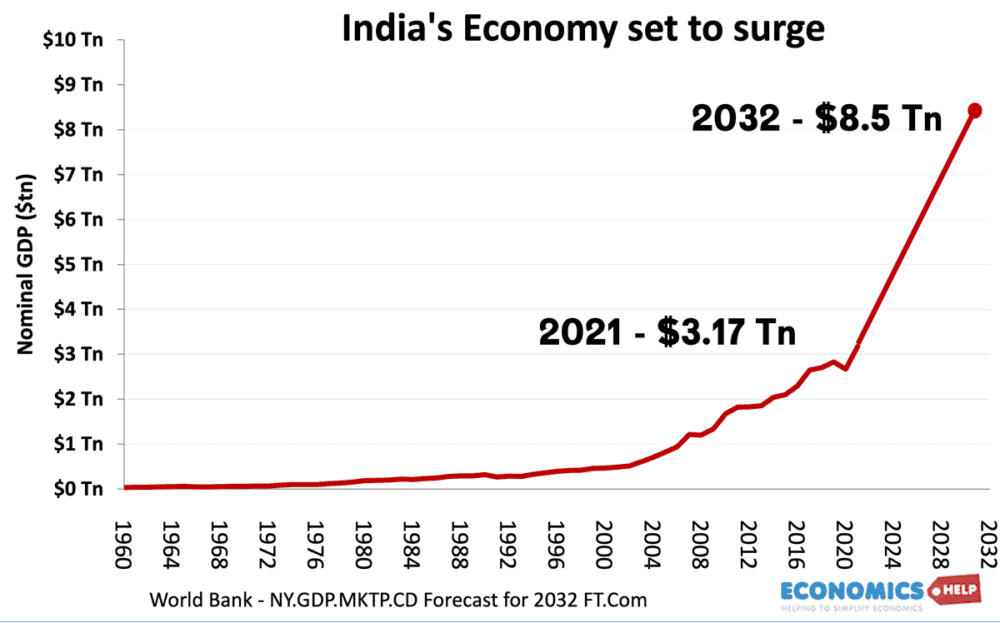
India now has many favourable factors which will enable, higher growth and continued progress in reducing poverty.
Firstly, given the world’s ageing population and falling birth rates across the world, India has a unique advantage of a growing working-age population. India will very soon pass China as the most populous country and the world’s biggest labour force. As multinationals seek to diversify investment away from relying on China, India will increasingly benefit as it seeks to attract investment in manufacturing and services.
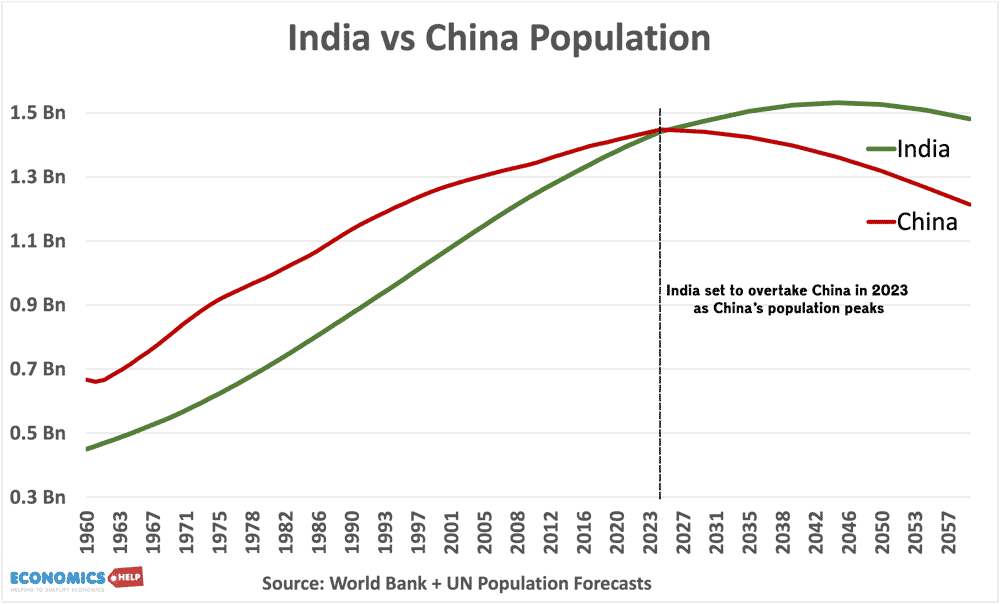
What is driving this Indian growth?
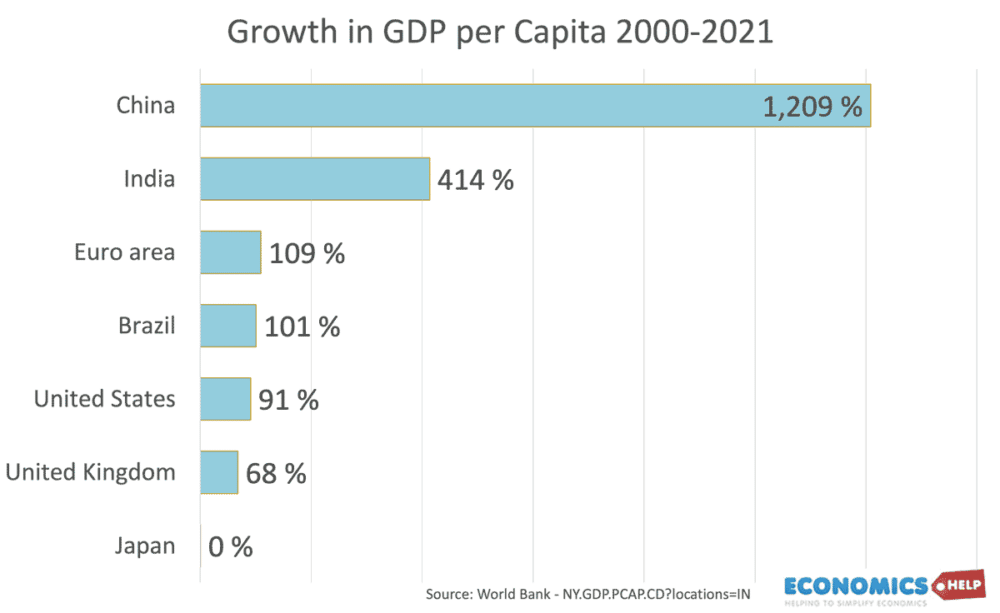
Indian GDP is the same as Chinese GDP in 2007 – there is a great prospect for India to catch up. Many small improvements in infrastructure, can give big benefits.
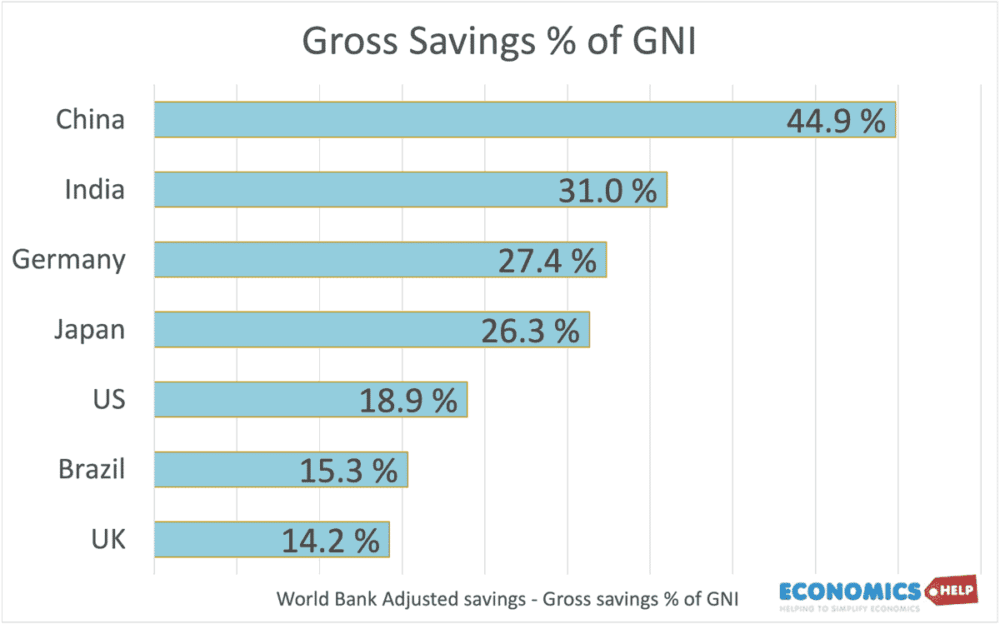
India has a high savings ratio, which will enable it to copy the successful Asian model of higher investment and reinvestment. This is both in the private sector, through powerful multinationals like Tata and also government public sector investment in improving infrastructure.
Historically, the Indian economy has been held back by problems of corruption and bureaucracy. The world bank rated India 130/190 for ease of doing business. However recent reforms go some way to creating a unified domestic market – such as abolishing regional variations in tax. There are also more incentives for investment both domestically and from abroad.
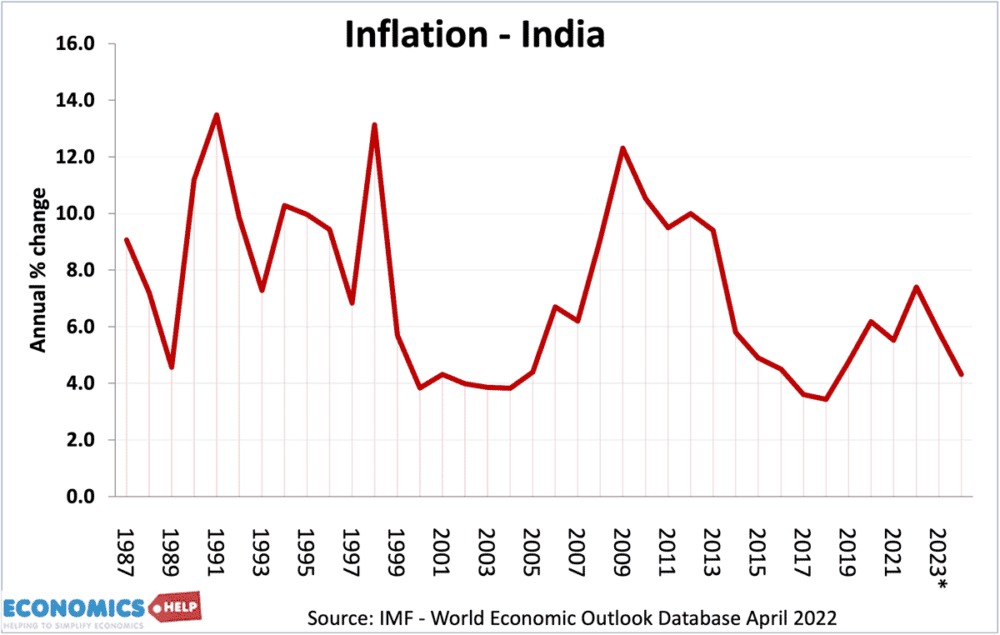
A limitation of the Indian economy is its reliance on energy imports. It spends more than 4% of its GDP on energy imports alone. This has been highlighted in 2022 when the Ukraine War pushed oil prices to record levels. This worsened inflation, undermining recent attempts to bring it down. It also is unwelcome given India’s current account deficit on balance of payments. However, by remaining neutral in the war, India has become a major buyer of Russian oil, benefiting from the cut price of Russian crude oil.
Also, the energy crisis has stimulated efforts to develop new green technology. In particular, the hot sunny climate of India makes it an ideal place to produce solar power technology. Given the prospect for economic growth, the Indian government aim to double the country’s current electricity generation capacity from 400GW to 800GW using green power in just eight years. Something China achieved but with a strong manufacturing base, that India doesn’t yet have.
It is not just about increasing power but also dealing with the pollution of coal-powered power stations. A study published in 2019, by Lancet, a British medical journal estimates more than one million Indians die each year from polluted air. Then there is the issue of global warming which is affecting India more than many other countries.
To meet its ambitious targets for green energy, India is encouraging large-scale investment from big multinationals and also developing new technology such as grid-scale energy storage, which uses solar power to pump water during sunny periods, which can then be used to create power when needed. The aim is to create an energy-storage cloud – dealing with problems of intermittent wind and solar.
One strength of the Indian economy is in information technology – helped by widespread knowledge of English, the global language. India has had recent success in delivering data to mobile phones at the lowest cost in the world. This strength in IT also has the capacity to help India be at the forefront of new green technologies such as green hydrogen and green ammonia. India is also developing good technology for electrolysers.
Problems facing the Indian Economy
All this points to a positive possible future for the Indian economy – higher growth, falling poverty and improved living standards. However, there are reasons to still be cautious
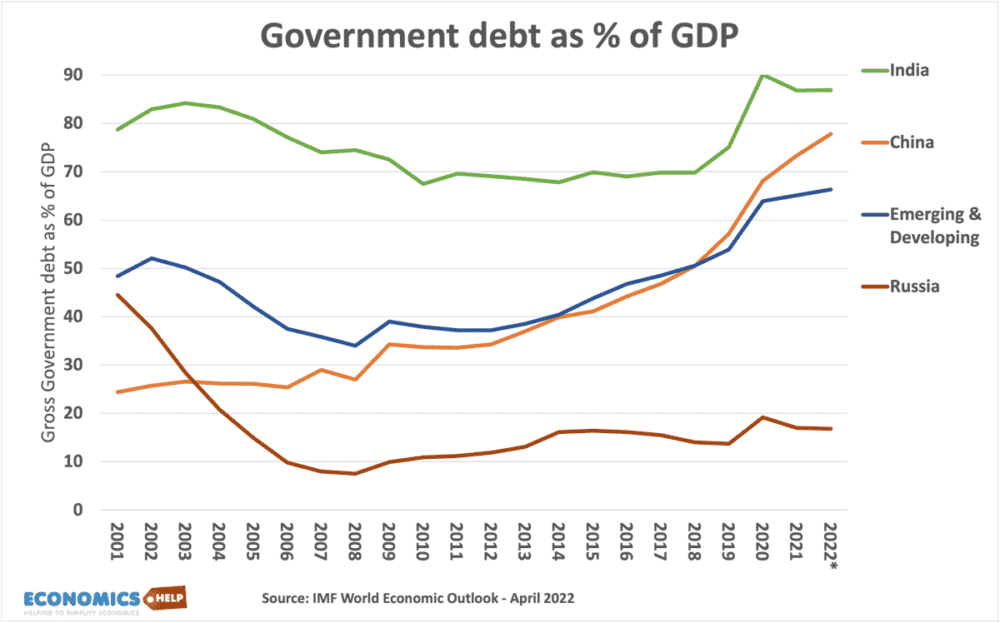
India’s debt is higher than many emerging economies, which will limit the government’s ability to meet its lofty investment ambitions. With global interest rates rising, there is a risk debt interest payments could increase to a problematic level. India’s tax revenue is just 12% of GDP – highlighting the inadequacy of the state and its ability to invest in public services.
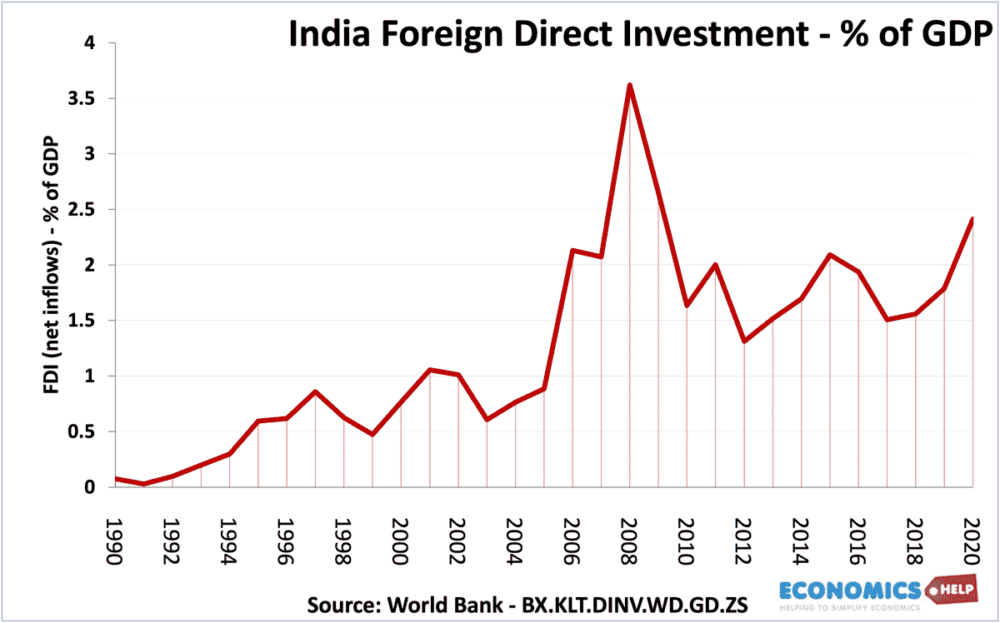
India will require substantial foreign direct investment to help fund the many investment projects, but although MNCs are looking to diversify, India is not without risk for foreign multinationals. The Rupee has depreciated more than 20% in the past five years, and this makes Indian investment risky.
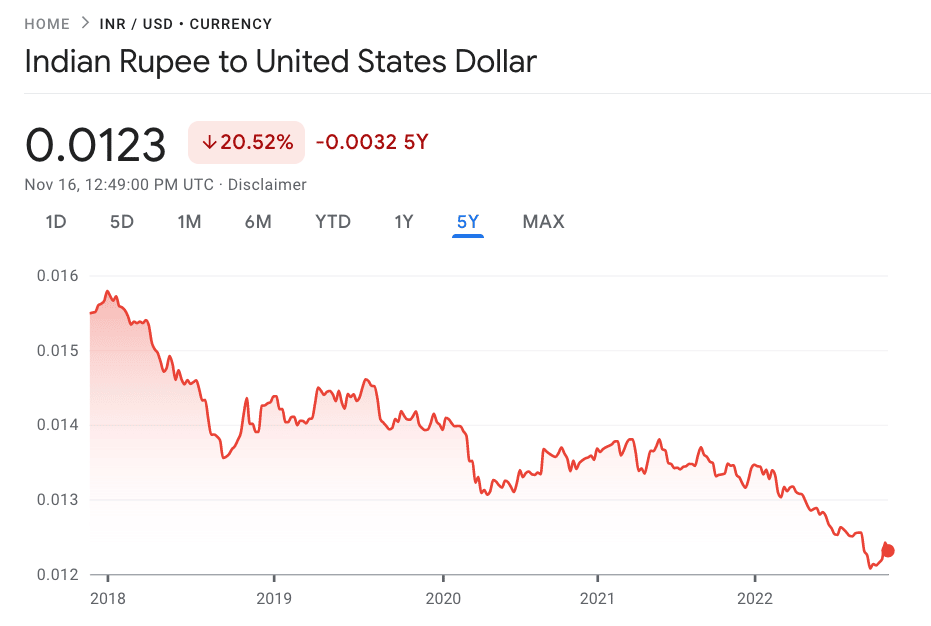
Indian Rupee – 20% depreciation.
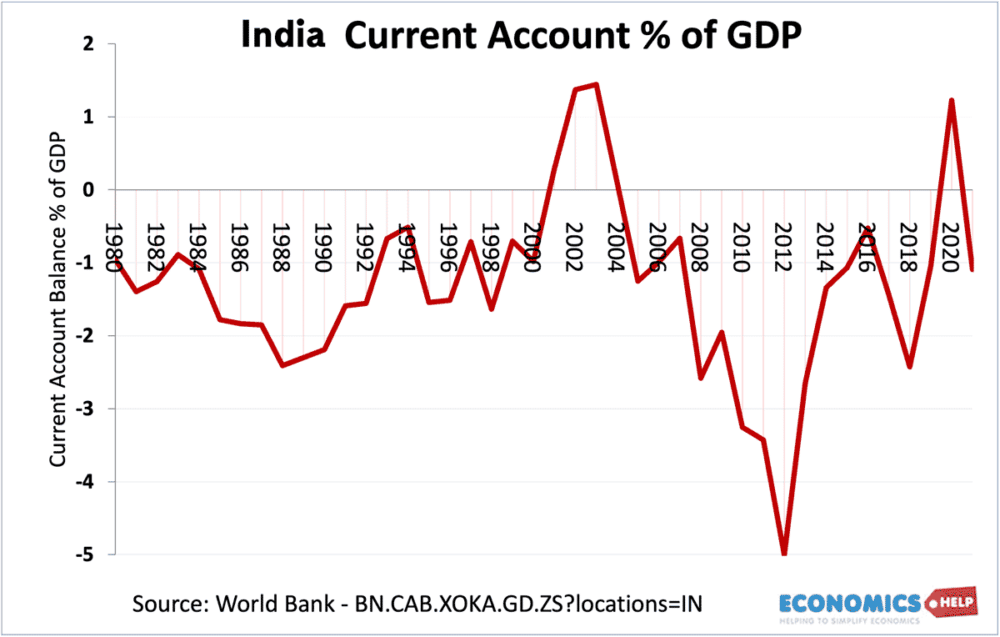
There is still ongoing issues of bureaucracy and red-tape which can distort investment and make it difficult to do business. This harms local enterprises.
India still faces cultural and social barriers to integrating more women in the labour force.
India is facing real pressure from global warming. It has 17% of the world’s population, but just 4% of the world’s freshwater. Around half of the rural households still lack a tap water connection. (BBC)
For an economy reliant on agriculture, around 74% of land under wheat cultivation and 63% under rice cultivation is at risk from water scarcity.
Despite the high growth recently, unemployment has remained stubbornly high, exceeding many other emerging economies. Being 7% in 2020 and most of 2021. One issue is that India has gone quickly from an agricultural economy to a service sector. Meaning there are few unskilled jobs in manufacturing to absorb the surplus unskilled labour. This means growth has become increasingly unequal – despite falls in absolute poverty levels
There will be more surplus labour to absorb, Agriculture produces 17.4% of economic output but, over 51% of the workforce are employed in agriculture
There is also increasing inequality from a geographical perspective. With much of the prosperity generated in the south, and the more densely populated north getting left behind.
Fall in Poverty in India
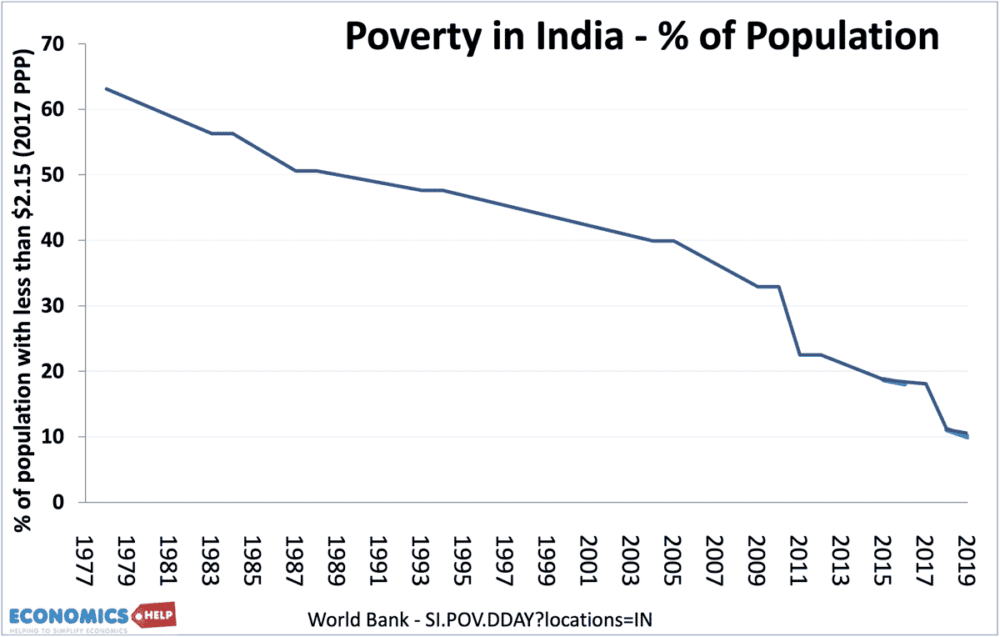
External links
- The World’s Biggest Bet on India – Economist.com
Further reading

Indian Economy flourish if tax brackets lowers to 20 % to 25 %.